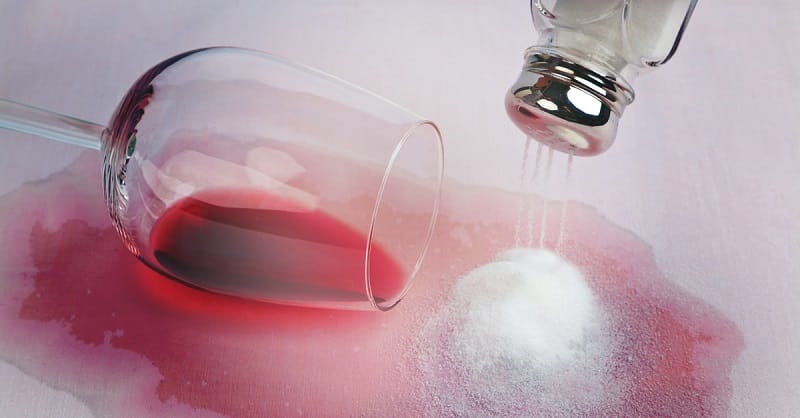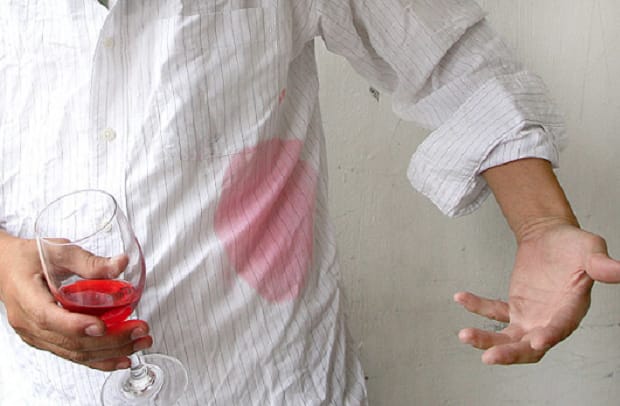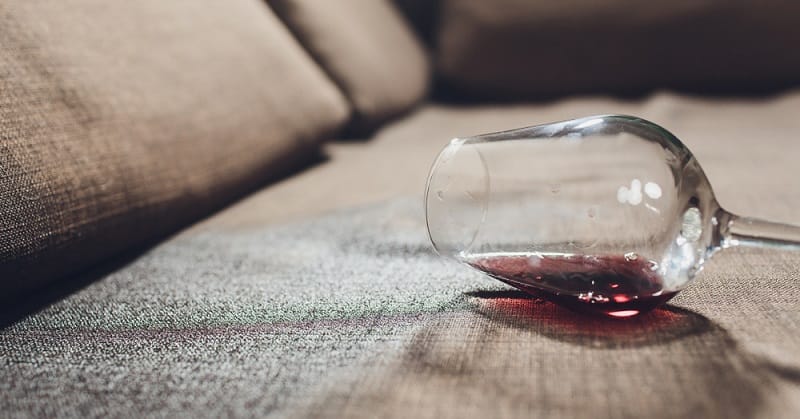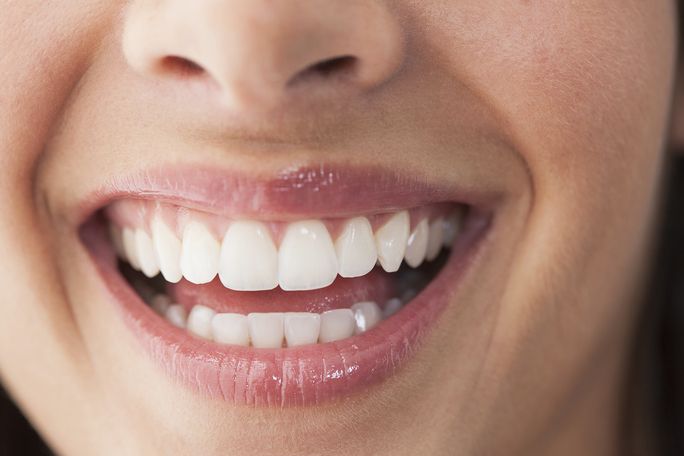
You don’t have to be a “proper housewife” to get annoyed at stubborn, sudden, thoroughly unwelcome stains on your stuff. Especially if you’ve got company! While a spin in the good ol’e washing machine will rid you of most of these woes, there are some soiling agents that are much more notorious than others. For example, wine, beet juice, coffee, Indian ink, and certain spices can easily mean permanent ruin for your linen or clothes.
Today, we’re talking about the mood maker and mood murderer: wine. A splash in the wrong place can ruin any dinner date, so it pays to know how to tackle such stains. For most of these, we are going to assume that the stain in question is one made by red wine. They seem to be the more common culprit than their white cousins, and they certainly make for a far more obvious mess.
ADVERTISEMENT
How to clean wine stain from clothes
Let’s tackle the most likely problem first. Nothing ruins a fine dining experience like getting a big bloody blot of vintage onto your favorite blouse or suit jacket. And if you happen to be wearing something white – the horror! Luckily though, there are several tried and true methods for saving your clothing, and your grace. Keep in mind, however, that you might need something on hand to change into until you can get to a washing station!
So, how do you remove a wine stain from your clothes? It will largely depend on the type of material your clothing is made of. Some soak up liquids quicker and better than others, and some are easier to wash out. Silk seems to be the object of much concern, so you can click here to get some good guidance on general stain removal from silk clothes.
That said, whatever your clothes are made of, your best bet is to act quickly, as far as possible. Fresher stains are always easier to remove than old, dried ones. Don’t even think about scrubbing the wine out! That will merely force it deeper into the fabric structure and help it set there permanently, not to mention you’re going to spread it further along the fibers.
Instead, go for the tried and tested “dry powders” solution. Wine, like many other liquid staining agents, has a tendency to spread into whatever dry thing comes in touch with it. Use that to your advantage! Take a dry powdery substance and apply a generous amount onto the fresh wine stain. The liquid will “move up” into it and then you can remove the moist powder with minimum impact to the clothes.
ADVERTISEMENT
Remember to not rub nor scrub the powder away! That’ll effectively reintroduce the wine into the cloth and negate all your effort. Blot it away instead, after you have let it sit for several minutes. Your best bet would be to treat the stain with plain old table salt. If you don’t have any on hand, effective alternatives include dry soap powder (or even tiny dry soap flakes), granulated hydrogen peroxide (officially known as sodium percarbonate), regular baking soda, talcum (the stuff baby powder is made of), and even cat litter. Yes, seriously.
If you were quick enough, this powder treatment might completely remove the stain in one go. If not, you might need to reapply it, or even use additional methods for the remaining discoloration. These will depend on whether the blot is fresh (hot water helps for non-heat-sensitive materials) or dry (oxi cleaner and washing machine to the rescue!). Bleach seems to be the most effective remedy for white clothes.

How to clean wine stain from furniture (including tablecloths!)
This might be the second most frequent encounter with red wine staining: someone tipped a glass onto the pristine tablecloth, or someone accidentally dripped a little onto a carpet, or sloshed a bit onto a couch. To make matters worse, these stains typically aren’t noticed right away (minus tablecloth), and even if they were, you can’t exactly go kneeling in front of guests, pouring salt onto your carpets, right? Headaches all around, but don’t worry!
First, let’s take care of the soiled tablecloth. For this, you can apply more or less the same solution as you would for your clothes – act quickly, use a powder like regular salt, baking soda, etc., blot it up and away after a few minutes, don’t scrub it in. Top tip: before you lay on the powdered remedy of choice, make sure to stretch the cloth tight. This will give you a clear view of the damage, as well as prevent it from touching other parts of the fabric (as it inevitably would were it all bunched up). Also, for the specific case of the tablecloth, hot water tends to work wonders, so employ it generously as soon as you’re done with the “first aid” i.e. salt/ whatever powder treatment.
Next, the carpets. Carpets stained with red wine are a difficult case, because there really isn’t much that you can do on your own. Blotting it with table salt is always the most appropriate first response, and you can use something like an oxi cleaner if you have some available. But at the end of the day, most of them will have to go to a dry cleaner’s or other appropriate maintenance professional. This might be a bit pricey, but at least you can rest easy knowing that your carpet will come back in pristine condition.
Finally, when it comes to upholstered furniture like couches, armchairs, and so on, there are a few more tricks to try out. Again, try and stretch the upholstering fabric tight, as much as possible. Do the emergency fix with salt or other powder, and give your oxi cleaner a try. But, in addition to thee two, there are two more cleaning strategies that might help you.
ADVERTISEMENT
The first is to try cleaning the furniture with club soda and vinegar. This can help draw out the stain, but be careful. Vinegar is sometimes recommended as a mordant (i.e. color fixing agent) in DIY fabric dyeing projects, so it might actually affix the natural pigments from the wine instead of drawing them out. This might or might not happen to you, depending on the type of fabric, what industrial dye it has been previously treated with, how old it is, and other such factors. Before you go full blown vinegar-and-soda-fix on your wine blot, test it out on a small spot near the edge.
Likewise, you may want to give the popular “dishwasher peroxide” hack a go. What this entails is you mixing some dishwasher soap (ideally liquid detergent) with some hydrogen peroxide. Look up specific measurements online, or go with your gut and see what works best for you. Do be careful, though: hydrogen peroxide has bleaching properties (think hair treatments). These will be made milder by mixing it with dish detergent, but they never really go away.
So, again, test out your remedy on a small spot of the stain before you apply it to the whole surface. Otherwise you might just end up with a blot of upholstery a shade lighter than its immediate surroundings – in other words, you will have replaced one stain for another. If you feel insecure at all, there’s no need to risk it. Just do the powder cleaning trick and then call in a professional.

How to clean wine stains off your teeth
Now, this is the most challenging bit of all, isn’t it? Be honest: just how much thought do you give to the inevitable dental discoloration that red wines cause? Certainly not at mealtime. But as you probably know, this classy drink is one of the main culprits in the cases of yellowing smiles. So, it doesn’t seem right to talk about it without covering ways to remove wine stains on teeth as well.
ADVERTISEMENT
There are effectively three ways to combat teeth staining originating from drinking wine: professional whitening treatment, home remedy treatments, and smart prevention. Let’s cover them in reverse order, that is, from simplest and cheapest to priciest.
First off, know how to prevent this kind of discoloration form occurring. If you know you will be drinking wine on your outing, brush your teeth before you go. This way, you remove any plaque that might have stayed on from your meals that day. Removing the plaque makes it harder for the wine to stary, as it doesn’t have that porous layer to stick onto.
Then, while your connoisseur session is going on, take some subtle precautions. When the plates come along, make sure to have some cheese, whichever sort you prefer or whatever you have on offer. Cheese is rich in calcium, so eating some will naturally build up a calcium layer on your enamel. Although you’ll have to brush it off later (to avoid plaque and tartar buildup), for the duration of the drinking that little bit of extra calcium will reduce the micro-porousness of your dental surface. Fewer available pores means fewer places for the wine molecules to attach and mess up your pearly whites.
Also, pay close attention to the types of wines you will be drinking. Our article focuses on red wine, so let us share an essential hack: if you will be drinking reds, stay well away from whites! Stick to one or the other! White wines have a higher acidic content, which erodes your teeth, making them prime surface for alien molecules. Red wines possess high levels of tannins (natural yellowish and brownish dye) which will then stick to your smile that much easier.
ADVERTISEMENT
Speaking of strategic drinking, consider having some sparkling water in between the glasses of alcohol. The bubbles are likely to help alleviate some of the staining by “lifting” it up and away (sort of like how salt does for your carpets and other furniture). If at all possible, bring some with you to the restroom and do a little swish around your mouth as a makeshift quick-fix “scrub”.
And while we are on the topic of scrubbing, brush again after you get home. No delays, ladies and gentlemen, unless you want to end up with a purple-tinted chewing apparatus! Not to mention horrendous after-wine breath. Do a proper teeth brushing and duly rinse, even if your wine time didn’t include a meal, or even a cheese snack. And – inevitable advice – do not neglect to floss on a daily basis.
With prevention covered, things get a little more complicated, as now we have to talk about undoing or at least mitigating the damage. Home remedies are a popular way to go for people who want to whiten their teeth, but don’t want to arrange and finance professional stain removal. Some of the most widely lauded strategies employ lemon juice, baking soda, water-diluted hydrogen peroxide, apple cider vinegar solution, activated charcoal, and the practice of oil pulling which has seen a steady rise in popularity recently.
In between these options and full-blown dental bleaching treatments are whitening toothpastes, whitening pens, and similar products. You can use these at home as well, or on the go, but they are typically more effective than “home chemistry”, even if they might require a bit of an investment.
ADVERTISEMENT
Finally, if your wine stains have progressed too far and you just can’t get rid of them on your own, consider making an appointment with your dentist. Explain that you would like a stain removal treatment and make sure to note that the staining originates (mostly) from wine. Knowing specifics like that can help your dental care provider better diagnose the condition of your teeth and figure out the treatment that will be best suited to your particular needs, desires, and budget.

We hope this guide helps you maintain your fabulous wine-lover lifestyle without the accompanying mess! What are your own favorite stain removal hacks?
ADVERTISEMENT











